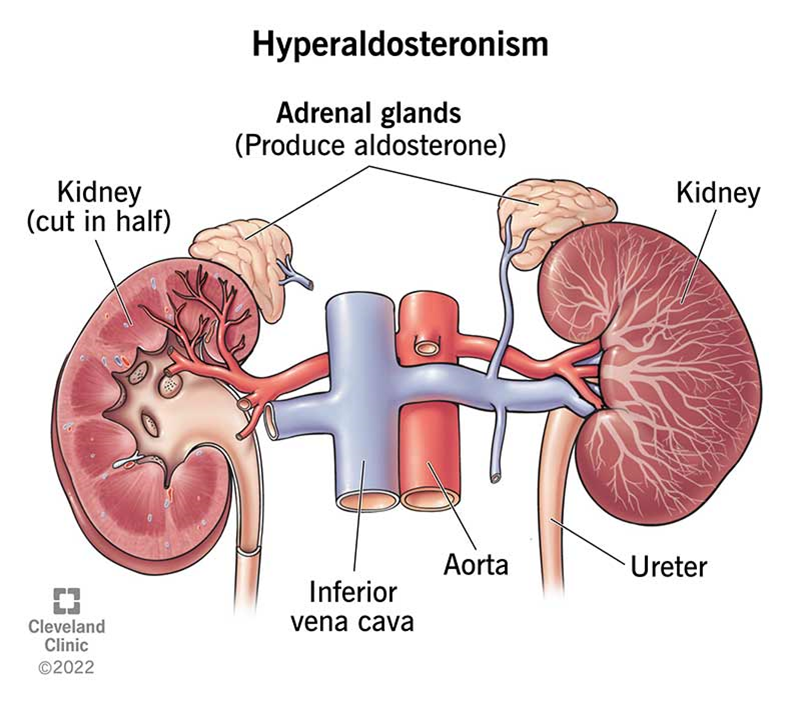A client who is receiving pregabalin for fibromyalgia complains of tremors in the hands. Which action should the nurse implement?
Administer a PRN dose of an antianxiety drug.
Obtain orthostatic blood pressure readings.
Notify the healthcare provider.
Collect a capillary glucose level.
The Correct Answer is C
Choice A reason:
Administering a PRN dose of an antianxiety drug might seem like a reasonable action if the tremors are related to anxiety. However, without a clear indication that anxiety is the cause of the tremors, this action could mask the underlying issue and delay appropriate treatment. It is essential to identify the root cause of the tremors before administering any medication.
Choice B reason:
Obtaining orthostatic blood pressure readings is a useful assessment for determining if the client has orthostatic hypotension, which can cause dizziness and fainting. However, this action is not directly related to the complaint of hand tremors. While it is a good practice to monitor vital signs, it does not address the immediate concern of tremors caused by pregabalin.
Choice C reason:
Notifying the healthcare provider is the most appropriate action. Tremors can be a side effect of pregabalin12. The healthcare provider needs to be informed to evaluate the severity of the side effect and decide whether to adjust the medication dosage or switch to an alternative treatment. This ensures that the client receives the most appropriate care and avoids potential complications.

Choice D reason:
Collecting a capillary glucose level is important for clients with diabetes or those at risk of hypoglycemia or hyperglycemia. However, there is no indication in the scenario that the client has diabetes or that blood glucose levels are related to the tremors. Therefore, this action is not directly relevant to the client’s current complaint.
Nursing Test Bank
Naxlex Comprehensive Predictor Exams
Related Questions
Correct Answer is B
Explanation
Choice A reason: Assessing the client’s strength in moving and turning in bed is important for overall care, but it is not the primary assessment needed before administering a laxative. This assessment helps in understanding the client’s mobility and risk of pressure ulcers but does not directly relate to the effectiveness or necessity of a laxative.
Choice B reason: Determining the frequency and consistency of bowel movements is crucial before administering a laxative. This assessment provides information on the client’s current bowel function and helps in deciding the appropriate type and dosage of laxative. It ensures that the laxative is necessary and helps prevent complications such as diarrhea or bowel obstruction.
Choice C reason: Observing the skin integrity of the client’s rectal and sacral areas is important for preventing pressure ulcers and maintaining skin health, especially in bedfast clients. However, this assessment is not directly related to the administration of a laxative. It is more relevant to overall skin care and prevention of pressure sores.
Choice D reason: Evaluating the client’s ability to recognize the urge to defecate is important for understanding their bowel habits and potential issues with incontinence. However, it is not the primary assessment needed before administering a laxative. This assessment is more relevant to managing bowel training and incontinence.
Correct Answer is D
Explanation
Choice A Reason:
Spironolactone is a potassium-sparing diuretic often prescribed for heart failure. While monitoring for side effects is important, excessive bruising is not a common side effect of spironolactone. Bruising might be more relevant for patients on anticoagulants or those with clotting disorders.
Choice B Reason:
Replacing salt with a salt substitute is not advisable for patients on spironolactone. Many salt substitutes contain potassium chloride, which can lead to hyperkalemia (high potassium levels) when combined with spironolactone. Hyperkalemia can cause serious cardiac issues, including arrhythmias.
Choice C Reason:
Covering the skin before going outside is not specifically related to the use of spironolactone. This advice might be more relevant for medications that cause photosensitivity, such as certain antibiotics or diuretics like hydrochlorothiazide, but not spironolactone.
Choice D Reason:
Limiting the intake of foods high in potassium is crucial for patients taking spironolactone. Spironolactone can increase potassium levels in the blood, and consuming high-potassium foods (like bananas, oranges, and potatoes) can exacerbate this effect, leading to hyperkalemia. Hyperkalemia can be dangerous and cause symptoms such as muscle weakness, fatigue, and cardiac arrhythmias.

Whether you are a student looking to ace your exams or a practicing nurse seeking to enhance your expertise , our nursing education contents will empower you with the confidence and competence to make a difference in the lives of patients and become a respected leader in the healthcare field.
Visit Naxlex, invest in your future and unlock endless possibilities with our unparalleled nursing education contents today
Report Wrong Answer on the Current Question
Do you disagree with the answer? If yes, what is your expected answer? Explain.
Kindly be descriptive with the issue you are facing.
